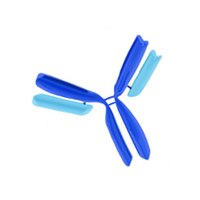DP11 Sigma-AldrichAnti-Adenovirus 2 E1A Mouse mAb (M73)
Recommended Products
Overview
| Replacement Information |
|---|
Key Spec Table
| Species Reactivity | Host | Antibody Type |
|---|---|---|
| Adenovirus Infected Cells | M | Monoclonal Antibody |
| Product Information | |
|---|---|
| Form | Liquid |
| Formulation | In 50 mM sodium phosphate buffer, 0.2% gelatin. |
| Negative control | HS27 cells |
| Positive control | HEK293 cells or adenovirus-infected tissue |
| Preservative | ≤0.1% sodium azide |
| Quality Level | MQ100 |
| Physicochemical Information |
|---|
| Dimensions |
|---|
| Materials Information |
|---|
| Toxicological Information |
|---|
| Safety Information according to GHS |
|---|
| Safety Information |
|---|
| Product Usage Statements |
|---|
| Packaging Information |
|---|
| Transport Information |
|---|
| Supplemental Information |
|---|
| Specifications |
|---|
| Global Trade Item Number | |
|---|---|
| Catalogue Number | GTIN |
| DP11 | 0 |
Documentation
Anti-Adenovirus 2 E1A Mouse mAb (M73) Certificates of Analysis
| Title | Lot Number |
|---|---|
| DP11 |
References
| Reference overview |
|---|
| Whyte, P., et al. 1998. Nature 334, 124. Ziff, E. et al. 1985. Cell 40, 705. Houweling, A., et al. 1980. Virology 105, 537. Berk, A.J., et al. 1979. Cell 17, 935. Jones, N. and Shenk, T. 1979. Proc. Natl. Acad. Sci. USA 76, 3665. Shiroki, K., et al. 1979. Virology 95, 127. Gallimore, P.H., et al. 1974. J. Mol. Biol. 89, 49. Graham, F.L., et al. 1974. Cold Spring Harbor Symp. Quant. Biol. 39, 637. |
Citations
| Title | |
|---|---|
|
|
| Data Sheet | ||||||||||||||||||||||||||||||||||||||||||||||
|---|---|---|---|---|---|---|---|---|---|---|---|---|---|---|---|---|---|---|---|---|---|---|---|---|---|---|---|---|---|---|---|---|---|---|---|---|---|---|---|---|---|---|---|---|---|---|
|
Note that this data sheet is not lot-specific and is representative of the current specifications for this product. Please consult the vial label and the certificate of analysis for information on specific lots. Also note that shipping conditions may differ from storage conditions.
|













